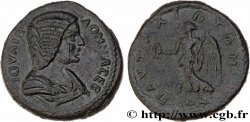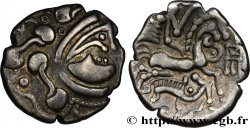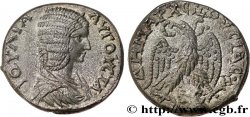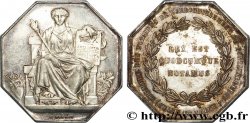Live auction - bpv_707269 - JULIA DOMNA Tétradrachme syro-phénicien
You must signin and be an approved bidder to bid, LOGIN TO BID. Accounts are subject to approval and the approval process takes place within 48 hours. Do not wait until the day a sale closes to register. Clicking on "BID" constitutes acceptance of the terms of use of cgb.fr private live auctions.
Bids must be placed in whole Euro amounts only. The sale will start closing at the time stated on the item description; any bids received at the site after the closing time will not be executed. Transmission times may vary and bids could be rejected if you wait until the last second. For further information check the Live auction FAQ
All winning bids are subject to a 18% buyer’s fee.
All winning bids are subject to a 18% buyer’s fee.
| Estimate : | 800 € |
| Price : | 1 938 € |
| Maximum bid : | 2 200 € |
| End of the sale : | 08 March 2022 15:06:12 |
| bidders : | 4 bidders |
Type : Tétradrachme syro-phénicien
Date: 215-217
Mint name / Town : Émèse, Syrie, Séleucie et Pierie
Metal : billon
Diameter : 23,5 mm
Orientation dies : 6 h.
Weight : 11,94 g.
Rarity : R3
Coments on the condition:
Exemplaire de qualité exceptionnelle pour ce type monétaire. Magnifique buste de Julia Domna. Revers de toute beauté. Magnifique patine de médaillier avec des reflets métalliques. Conserve l’intégralité de son brillant de frappe et de son coupant d’origine
Catalogue references :
Obverse
Obverse description : Buste de Julia Domna à droite, diadémé et drapé, vu de trois-quarts en avant (L5).
Obverse legend : IOULIA. AUGOSTA.
Obverse translation : (Julie impératrice).
Reverse
Reverse description : Aigle debout à droite, les ailes déployées, la tête et la queue tournées à gauche, tenant dans son bec une couronne perlée ; buste radié, drapé et cuirassé de Shamash à gauche entre les pattes de l’aigle, H en fin de légende de revers dans le champ droit.
Reverse legend : DHMARC. EX. OUSIAS
Reverse translation : (Revêtu de la puissance tribunitienne).
Commentary
Dans la base TSP maintenue par Michel Prieur, quatre exemplaires sont maintenant répertoriés, un seul en musée, à Paris, ex collection Chandon de Briailles, 1907.








 Report a mistake
Report a mistake Print the page
Print the page Share my selection
Share my selection Ask a question
Ask a question Consign / sell
Consign / sell
 Full data
Full data















